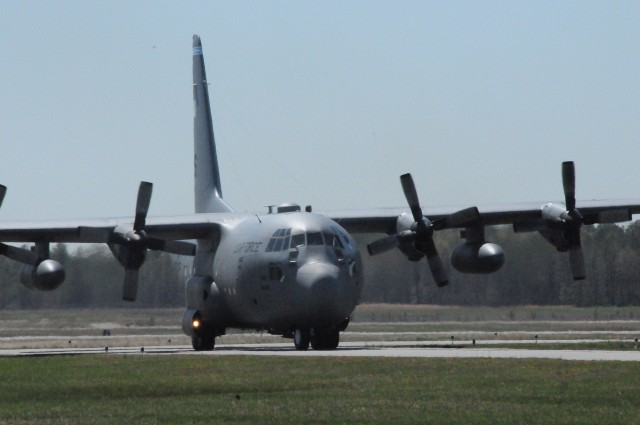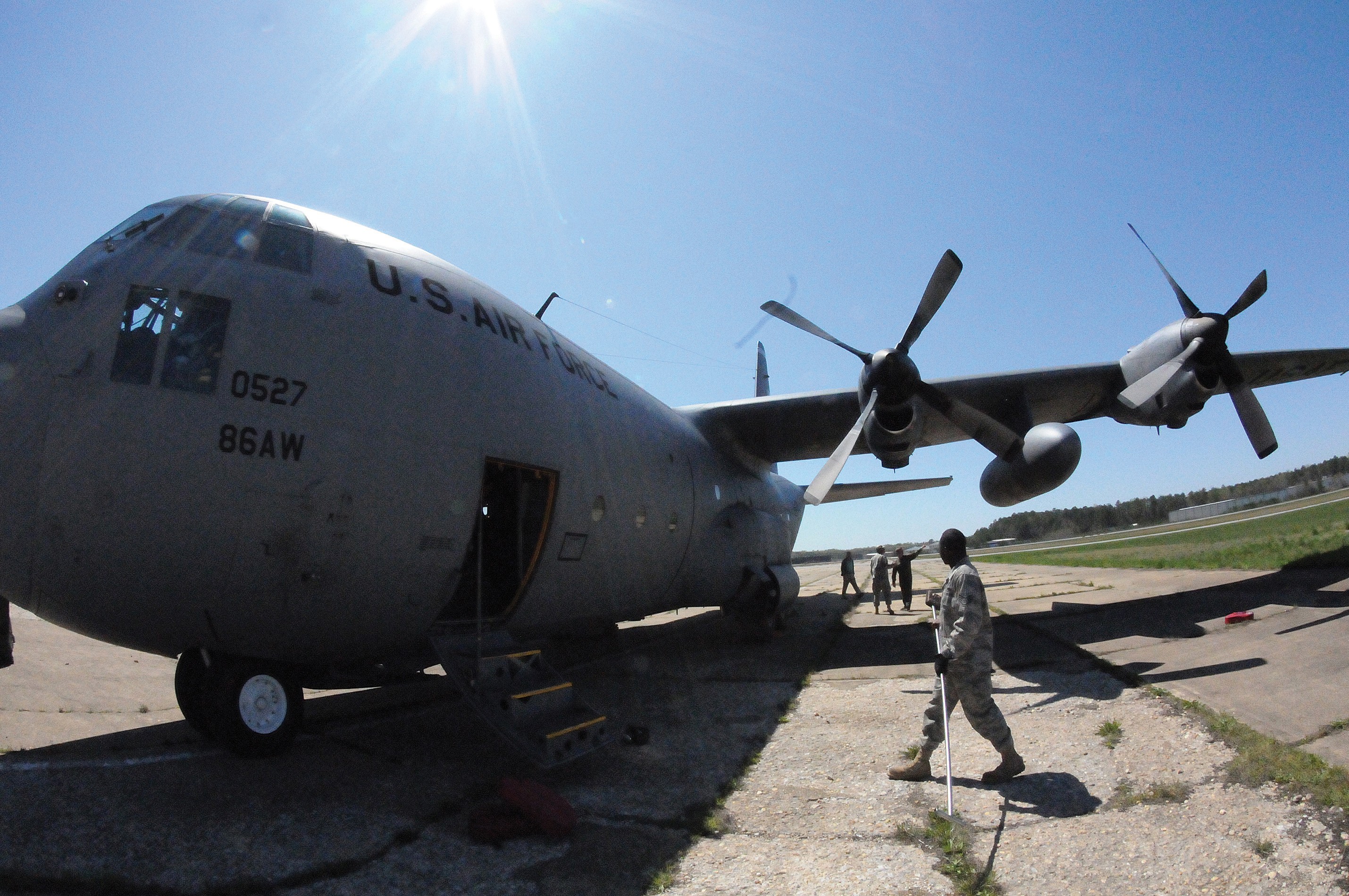Fort Lee, Va. (April 16, 2009) -- The transporters are on their way.
A U.S. Air Force C-130E aircraft that landed at Dinwiddie County Airport April 16 was the most tangible evidence yet that the transporters of the U.S. Army Transportation Center and School will soon plant their flag at Fort Lee.
The USATC&S is scheduled to relocate to Fort Lee from Fort Eustis by 2011. The move is part of the 2005 Base Realignment and Closure plan that will also relocate several other schools and organizations here.
Col. Tod Mellman, chief, BRAC Office, USATC&S, Fort Eustis, said the aircraft will eventually be moved to Fort Lee and primarily be used to train transporters in cargo loading procedures.
"Once we get it parked and operational, we\'ll use it for vehicle and equipment air load training for students enrolled in the new transportation school that will be located in building 2300, which is currently the Noncommissioned Officer Academy," he said.
Enlisted transportation management coordinators undergoing advanced individual training and NCOs, warrant officers and officers attending the various courses at the Army Logistics University will train on the structure.
It will also be used for other unspecified training by other units and services, said Mellman. The C-130E is scheduled for location in the area behind the Zuskin Fire and Emergency Services Center situated just off Sisisky Boulevard.
Mellman said a ramp and platform must be constructed in the area prior to moving the aircraft.
"We'll have to put down cement pads, construct a road network and so on around the site first before we can actually move it to Fort Lee," he said of the area to be called the Multimodal Training Site. "The plan is to move the aircraft from Dinwiddie County Airport to Fort Lee in the May 2010 timeframe."
The MTS will also include a rail platform and rail cars for loading vehicles and equipment onto trains and a C-117 aircraft mockup, said Mellman. Relocation of the aircraft to Fort Lee includes removing the wings and tail for road transport and defueling.
Personnel from the Quartermaster Center and School's Petroleum and Water Department accomplished the latter mission on site soon after the aircraft landed.
"We'll test the fuel and store it at the Petroleum Training Facility," said Staff Sgt. Everett Goins, a PWD instructor.
Members of the 86th Airlift Wing flew the 45-year old aircraft on its maiden voyage from Ramstein Air Base in Germany.
A considerable amount of money was saved by moving the aircraft here in lieu of storing it at a facility in Arizona, said Mellman.
The C-130E will remain at Dinwiddie until the MTS is completed.
About the C-130: Aca,!Ac The plane's interior is 40 feet long, 119 inches wide and 9 feet high. It can reach a top speed of 345 mph. Aca,!Ac The C-130 Hercules primarily performs the tactical portion of the airlift mission. The aircraft is capable of operating from rough, dirt strips and is the prime transport for air dropping troops and equipment into hostile areas. Aca,!Ac The C-130 operates throughout the U.S. Air Force, serving with Air Mobility Command (stateside based), Air Force Special Operations Command, theater commands, Air National Guard and the Air Force Reserve Command, fulfilling a wide range of operational missions in both peace and war situations. Aca,!Ac Introduced in August of 1962, the 389 C-130E's that were ordered used the same Allison T56-A-7 engine, but added two 1,290-gallon external fuel tanks from previous generations of the plane and an increased maximum takeoff weight capability.






Social Sharing